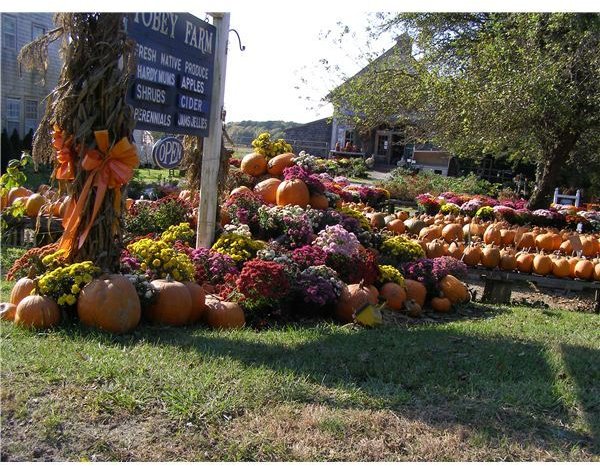An ESL Halloween Lesson for Adult Learners: Activities, Vocabulary & Creative Writing
Class Objectives
As the end of October approaches, teaching adult English language learners about the traditions and observance of what we now call,
Halloween, provides an opportunity to practice the language skills of reading, writing, speaking and listening. Begin the lesson by taking a trip back in time to the origins of this celebration.
The objectives of the class is to:
- provide adult learners with the history of Halloween.
- increase their vocabulary with words associated with the observance.
- allow for discussion of other festivals or holy days of the dead.
- practice writing skills through storytelling.
Samhain, All Soul’s Day and All Saint’s Day
Activity One: Brief History
Begin the lesson by giving students a brief history of Halloween. After introducing the holiday to the students, ask them if they celebrate a harvest day or a day of the dead in their culture. Have them share their observances with the class. Depending on the ethnicities of the students, there could be a diverse response to this request.
Prepare ahead of time to fill in the blanks if your class is not diverse by creating a list of worldwide observances of the harvest and day of the dead feasts. In this way, students will come to understand that this is not simply an American holiday, but an ancient celebration found globally within all cultures.
Apples, Pumpkins and Cornstalks
Activity Two: Traditional Props
Three of the most frequently used props for Halloween are apples, pumpkins and cornstalks. Introduce these props to the students by sharing their symbolization.
-
Apples, to the Celts, were sacred, coming from the Isle of Avalon**,** a land that existed in a magical mist across the sea. Bobbing for apples represented the journey to the Otherworld for the sacred apple.
-
Pumpkins or turnips were used to create jack-o-lanterns by carving out the middle of the vegetable, cutting a face out of the shell, and then lighting it with a candle placed inside.
-
Cornstalks were a symbol of the harvest. They were used to stuff scarecrows to keep crows out of the fields, as well as to ward off evil spirits.
Adults enjoy hands-on activities as much as children do. Choose one of the tradition props to bring to class for adult students to experience. For instance, set a day for everyone to wear old clothes to class. Provide small pumpkins for everyone along with carving knives, lots of old newspaper to cover tables and/or the floor. Have students carve their own pumpkin to take home.
Alternately, bring in a large basin, add water enough to float apples in the basin and have students bob for the apples. Provide or have students bring in towels for drying off.
After they have tried these activities, have students write about their experience, sharing with their peers if they wish.
Witches, Warlocks and Magic
Activity Three: Vocabulary
Provide students with a list of words associated with Halloween, negotiating the meanings in class. Provide the etymology whenever possible, or have students look up and share the etymology of the words with their classmates. (NOTE: This can be done as a homework assignment after introducing the vocabulary. Students can use their computers or etymology dictionaries.)
Discuss how words change meaning over time. For instance, the word witch comes from the Old English wicce or wise woman, which has its origins in the Old English word cwic, which means alive or lively. Today, when we use the word witch, it is usually seen as a derogatory term for an old hag that casts spells on people.
Ask students if they know any other words that have meanings that are different or changed over time. Examples: pot (as in marijuana, not a container to cook in), cell (as in cellphone, not biological cell or small room), router (as in the device to connect to the Internet, not the tool used in cutting wood) and web (as in World Wide Web, not the home of a spider.)
Creating Stories
Activity Four: Creative Writing
Once students feel comfortable with the vocabulary around Halloween, ask them to write their own haunted, scary, funny or entertaining story using the vocabulary words. Explain that they are to write their own original story.
Have them share their stories with the class. Do not correct their mistakes as they are reading. Keep track of them as they read and make corrections once they have finished sharing. This enables all the students to hear the story without losing their train of thought due to interruptions.
At the end of the adult ESL Halloween lesson, students will have a clearer idea of the celebration of Halloween as well as an understanding of how harvest celebrations and the day of the dead are universal ideas shared by many cultures.
References
- Halloween in New England by -jkb- under CC by 3.0
- Catholic Education Resource Center: All Saint’s and All Soul’s Days, http://www.catholiceducation.org/articles/religion/re0199.html
- Source: Author’s experience
- Wicca: Samhain Lore, http://wicca.com/celtic/cc002.htm
